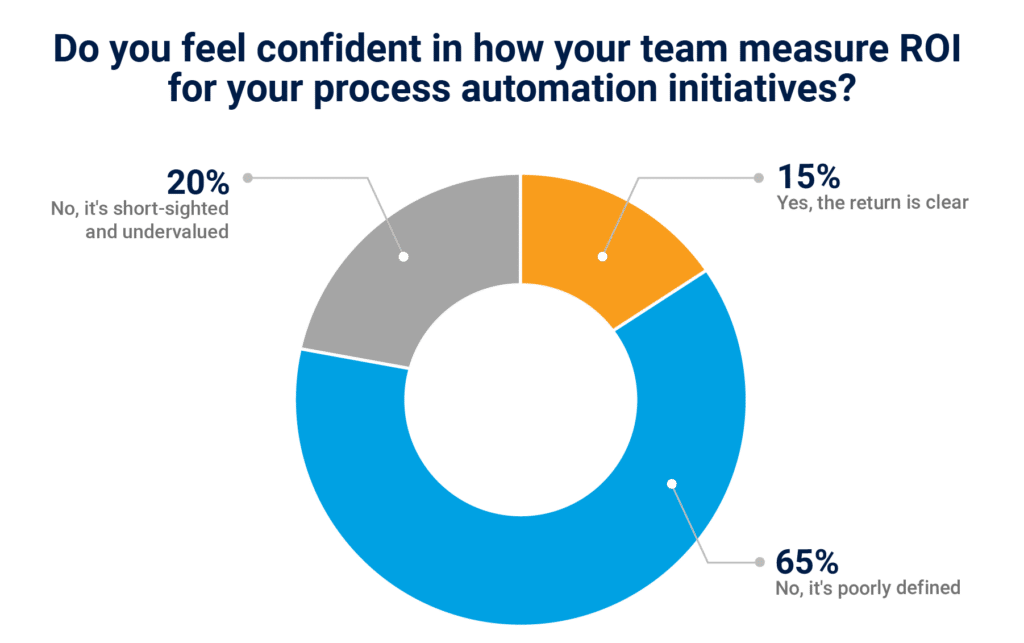Integrating new technology involves considerable research, effort and investment. Whether you are thinking of automating a single process or implementing automation enterprise-wide, the first question is likely centered around the Return on Investment (ROI).
If this is the case, you are not alone, as many enterprises seem to be grappling with this question. From clarity on measuring ROI to uncertainty around the efficacy of measurement mechanisms, there seem to be many doubts.
“Do you feel confident in how your team measures ROI for your process automation initiatives?”
We recently raised this question in polls at two noteworthy executive events: PEX Network’s BPM Live 2020 and the Manufacturing Leadership Council’s Rethink event. The results from both polls reveal that many respondents are not confident in how they measure ROI for their process automation initiatives.
In fact, a significant 85% of poll participants felt they weren’t confident in their measurements:

- No, it’s poorly defined – 65%
- No, it’s short-sighted and undervalued based on our formula – 20%
Only 15% opined that the returns on automation were clear to them.
These responses indicate a general thought process across companies of all sizes:
Measurement mechanisms are myopic
Most enterprises lean on available and popular equations for determining their ROI calculations. Although convenient, these equations may not accommodate the layers of detail incorporated into business process automation.
What to measure is ambiguous and ill-defined
There are enterprises who look for quick returns and there are those who want to implement process automation enterprise wide. But many are uncertain if the best way to calculate ROI is to measure the single process’ impact or organizational-wide impact, or even short-term impact vs long-term.
Are enterprises even looking in the right direction?
Many enterprises like to keep ROI measurement limited to numbers. But not all benefits are financial. There are abstract or non-numerical outputs which may be side-lined but certainly need to be measured to accurately estimate ROI. These include better compliance, effectively utilized manpower, and happier customers.
If these issues with understanding are resolved, the next challenge is to customize the measurement tool – the traditional equation for ROI calculation using relevant metrics. Again, the calculations will need to be tailored for different businesses and even for different processes within the same organization.
It may all sound mysterious or hard to accomplish, but there is hope yet. Our recent guide titled ‘A Smarter Way to Measure ROI for Business Process Automation’ clearly outlines how to define success and build a custom formula. Access it here.

